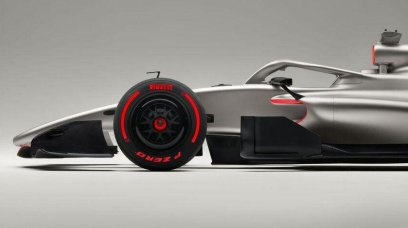After the fifth race of the season, the 2023 Formula 1 cars have already increased their performance compared to 2022 by the equivalent improvement recorded at the end of last season. Cars of this season are more than a second-and-a-half faster than the fully-developed models of last season. Such is the evolution of the cars that F1 tyre supplier Pirelli responded by bringing forward the tyre specifications which were scheduled for 2024, set to be introduced from the British Grand Prix at Silverstone. The decision was made on safety grounds, due to the higher loads and stresses which the tyres are subjected to. Having said that, the constant growing trend in performance highlights some critical issues with respect to the current configuration of the cars, related to the objectives that the FIA had defined as priorities when drafting the technical regulations. One of the primary targets was the reduction of slipstream turbulence, thus allowing closer battles on the track. The single-seaters built in 2022 were, even from a purely visual point of view, substantially different from the template of the 'new generation' F1 cars that was originally presented by the sport.
Basically, what initially appeared to be an extremely restrictive aerodynamic regulation has proved to be a very broad and differentiated development platform, despite the well-defined constraints in terms of CAD volumes of the single-seaters. In practice, the fear that all the cars would be identical and characterised by a rather crude aerodynamic concept had already practically dissolved on the eve of last season. Not only did three aerodynamic philosophies appear for 2022 (the one with the carved sidepods represented by Ferrari, the zero pods by Mercedes and the sloping sidepods by Red Bull), but, most importantly , there became an almost unlimited possibility to develop the floor. Until 2021, the floor of the cars was almost identical, except for the peripheral level (side edges) on all cars, and the downforce generated by it mainly depended on the shape of the diffuser and the rake angle of the car. Now, the underside area of the cars constitutes well over fifty percent of the aerodynamic development. If we consider the number of updates on the top side of the car to be equal to the number on the under side, more of the performance gains would be linked to the lower half of the car. Although it is not possible to see the exact developments of the cars in every race, this has essentially been more constant since last year than in the past.
At a macroscopic level, the effects are not only reflected, as mentioned at the outset, on performance, but also on the quality of the wake produced. It is increasingly clear that the designers have progressively given the cars aerodynamic prerogatives especially at the front, which favour the out wash, or the deflection of turbulence to the outside. It is a prerogative that the FIA, in drafting the regulation, had tried to strongly limit; the most evident demonstration of this is the wheel covers, which in fact imply a dissipation of the heat produced during braking inside the wheels and not the other way around. As a consequence, the current aerodynamic concept of the cars is gradually reducing the effectiveness of the regulations in relation to the wake effect between the cars. This also is not helped by the convergence of the aerodynamic concepts, which are increasingly aligning themselves with that of Red Bull, which also results in a medium-term convergence in performance. Basically, the difficulty in completing overtaking manoeuvres has not only increased due to the greater turbulence of the wakes, but also due to a reduction of performance gap between the various cars.
The DRS dilemma
A fact that seems appropriate to underline is a trend of shortening the DRS zones has emerged in the last few races. This is a measure that has especially caused discussions among the drivers, who see this decision going in the wrong direction with respect to the desire to increase the show on the track. Paradoxically, this decision, although not openly declared, seems to have been determined only to reduce the advantage of those cars able to exploit the DRS more effectively than their rivals (read Red Bull). On the one hand, this can in theory reduce the gap of the other cars, but in practice it can backfire for at least two reasons. The first is the creation of 'DRS trains' in which the cars have practically identical performances, the second, but no less relevant, is that given the greater effectiveness of the Red Bull DRS, on a shorter active stretch of DRS zone, Red Bull are still able to reach the higher top speeds very quickly. For rival teams, it takes a longer time to gain the same benefit. Essentially, Red Bull's DRS advantage is magnified in short DRS zones. In short, the hastily-implemented changes have not worked on these state of the art Formula 1 aerodynamics.
Most read







